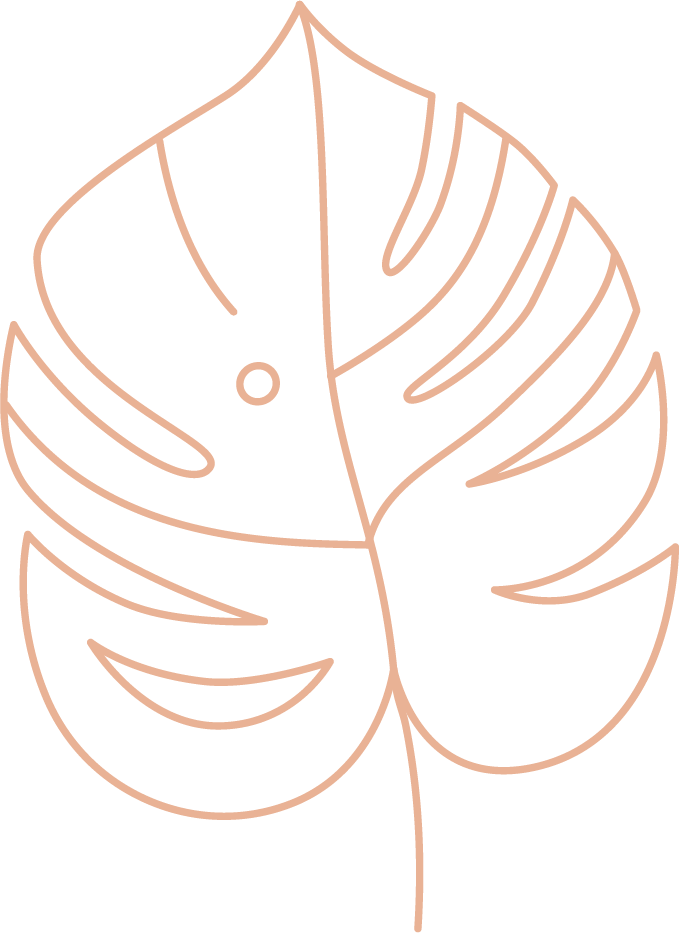


According to the National Institute of Mental Health, anxiety is one of the most common mental health disorders in the U.S. Almost a third of adults will experience an anxiety disorder at some point in their lives. As a holistic therapist for over a decade, I have worked with so many people who have struggled with anxiety. In moments of stress and overwhelm it can feel all consuming. I love working with clients to explore what coping strategies work for them.
In this post I talk about some of my favorite grounding techniques for anxiety. I hope you will find some new ways to use grounding techniques that maybe you haven’t tried before. As always, take what you need and leave the rest.
Grounding techniques are strategies that help bring our attention to the present moment. They serve as a gentle reminder that we are safe, and help reduce feelings of anxiety, panic and overwhelm. While the name might sound fancy, almost anything can be a grounding technique as long as it brings your attention to the present moment.

Grounding techniques work by helping to bring our awareness to the here and now. In the modern world we’ve become more anxious than ever. What initially started as a means for survival has adapted into feeling anxious and on edge in situations where our physical safety isn’t threatened. While there might not be any physical risks, our body isn’t able to differentiate the stress we feel, and our “flight, fight or freeze” response regulated by the sympathetic nervous system kicks in.
Grounding techniques are an amazing way to help anchor you in the present moment and get the parasympathetic nervous system to take over and calm the mind so that you can better deal with whatever emotion you’re experiencing.
Have you ever heard of the amygdala hijack? The amygdala is the part of the brain that is responsible for how we process our emotions. When something happens and we perceive a threat, our amygdala can take over and kick in our “fight, flight or freeze” response. Now let’s imagine that all of our feelings range on a scale from 1-5. 1 being I am calm, and 5 being I’m experiencing this emotion to the fullest extent. Anytime we go above a 3 on the feelings scale, our “fight, flight or freeze” response kicks in, our IQ literally drops 15 points, and we are incapable of problem solving as well as we usually are.
Having an awareness of where you are on this feelings scale at any given point of time is so important when it comes to managing anxiety.
Although most people tend to reach for grounding exercises during times of desperation, like when they’re feeling anxious, overwhelmed or experiencing a panic attack, grounding techniques are beneficial to use anytime. For someone who struggles with their mental health, using grounding techniques can help with managing distressing feelings, distressing thoughts, and improving overall well being.
Below I share some of my favorite grounding techniques to help you when anxiety triggers arise, you feel overwhelmed, or you’re on the verge of a panic attack. Keep reading to add some new powerful tools to your self-care tool belt.
Using your five senses with the 5,4,3,2,1 grounding technique. This is an amazing grounding exercise to bring you back to the present. It’s a really simple practice that you can do anywhere. I walk you through each step below.
Look around your current environment and notice 5 different things you can see. Try to examine them and notice every little detail of what you’re looking at.
Look around you and touch 4 different things. Maybe you touch the chair that you’re sitting on. Notice any physical sensations that arise as you touch the different objects. For example, touch a blanket and notice how soft and warm it feels.
Close your eyes and tune into the sounds around you. Maybe you hear the laundry going, or the tv on in the background. Focus all your awareness on the sounds around you.
This one can be challenging at times because you might not be able to smell anything different. But do your best to use your sense of smell to pick up on anything around you. If you’re outside you might smell some flowers, or if you’re inside maybe the smell of a lingering meal. I also find it helpful to keep some essential oils or candles in the house for when you’re in a pinch.
This one might be the hardest to do if you aren’t at home. If you are home or you’re out and about and have a snack easily accessible, take a bite of your food and notice what you taste as you savor the food.
Breath work and deep, slow breaths are amazing grounding techniques to use because you can do them anytime, anywhere. Two of my favorite practices for moments of heightened anxiety are the box breathing method and the 4-7-8 breathing method.
I love box breathing because it’s really hard for your mind to wander when you’re focused on counting. That combined with the physiological benefits of breath work and it makes for a really powerful grounding technique that is so simple.
Inhale for the count of 4, hold the breath for the count of 4, exhale for the count of 4 and hold your breath for the count of 4. Repeat this as many times as necessary until you start to feel more calm. The more experienced you get with breath work, the bigger you can make your box. This might look something like, inhale for the count of 6, hold the breath for the count of 6, exhale for the count of 6, and hold your breath for the count of 6.
This is a great grounding technique because it helps shift your body into the parasympathetic nervous system while distracting your mind from any stressful thoughts.
Inhale for the count of 4, hold the breath for the count of 7 and exhale for the count of 8. Repeat this as many times as needed until your body and mind feel calm.
If you are interested in learning some more breath work practices, here are 3 breath work exercises for mental health.
Increased muscle tension is really common when our body is in a state of stress. Progressive muscle relaxation is an amazing grounding exercise that brings your attention to bodily sensations and back to the present.
Start by sitting comfortably or lying down in a safe place.
Bring your awareness paying attention to your feet, tighten and tense your feet as much as possible for 5 seconds, then relax your feet.
After you have done your feet, move up to your calves and shins and tighten and tense for 5 seconds then release.
Repeat moving up through each body part until you get all the way up to your face.
Once you have done every body part, tighten and tense your entire body for 5 seconds and then relax.
Repeating a phrase or a mantra that is compassionate and calming is a beautiful way to practice self-compassion in challenging moments. A lot of times in moments where we are having a lot of feelings of anxiety, we focus on why we are experiencing that feeling and even judge ourselves.
Instead of falling into this trap, try shifting your attention to what would feel supportive in this moment. Some of my favorite ways to practice self-compassion in distressing moments are to name the feeling and self-validate.
An example of this would be something like, “I’m noticing that I am feeling overwhelmed right now, and it’s ok to feel overwhelmed. What’s something that I could do to nurture myself through these difficult emotions?”
Another great grounding exercise is to have a phrase or a mantra to repeat to yourself. Some of my favorites for moments of heightened anxiety are:
Right now I am safe
This feeling is temporary, even if it feels like this will never end
I am capable of moving through difficult emotions
My thoughts and feelings are valid
I feel grounded in this moment
I am not my thoughts or feelings
You might remember this game from car rides as a child. Hey, I still even enjoy playing this game on long road trips as an adult. If you aren’t familiar with the game, here’s a quick how-to to get you started.
Pick a letter and come up with as many words that start with that letter as possible. If you really want to get creative you can pick a category and a letter. For example you could do foods that start with the letter A. Then list off apple, avocado, apricots, acorn squash, etc. If you’re still feeling anxious once you run out of things in that category, pick another letter or category and repeat.
One of the best physical grounding techniques is to use your sense of touch. Some great ways to do this might be running cold water lightly over your fingers, splashing cold water over your face, holding onto a cold ice cube and watching it slowly melt.

Meditation is one of the best mental grounding techniques during times of stress. If you are new to meditation, it can feel really intimidating. A great way to experiment, is to try a guided meditation. There are a ton of amazing mediation apps out there, my favorite being Unplug, but you can also find free ones on insight timer, YouTube and instagram. I also have a short blog post, the beginners guide to mediation with a simple meditation practice if you want to give that a try.
Going for a mindful walk is a great way to feel grounded. If you have the time and you feel safe, lace up your shoes and get out for a walk around the neighborhood. Focus on all of the things around you, do your best to notice all of the little details. You might be surprised to notice things you have never seen before.
If you don’t have the time to get out for a walk, go outside for even just a few moments. Take your shoes off and allow your bare feet to connect to the earth beneath you. Notice the sensation of the ground on your toes, is it warm or cold? Are you standing on grass or concrete. Do you notice any other sensations? What are some sounds you can hear? Whenever you notice your mind start to wander, slowly guide your awareness back to how your body feels anchored to the ground in this moment.
Mindful eating, is a great way to take a few moments to slow down and really connect to your body. Mindful eating can look different and range from mindfully eating a whole meal, or mindfully eating one bite of food.
Take a small piece of fruit or chocolate and hold it in your hand.
Find a comfortable place to sit.
Once sitting, take a few deep breaths and focus your attention on the food you’re holding in your hand.
Imagine that this is your first time seeing or eating this food.
Use your five senses to explore this food. What do you see? What color is it? How does it feel in your hand? Is it smooth, is it bumpy? How does it smell? Spend a minute or two exploring this food and taking in as much detail as possible.
Once you’ve noticed all the details of this food, close your eyes if it feels safe and comfortable.
Take a small bite and chew it slowly and mindfully for at least 30 seconds noticing what you taste and the sensation of the food in your mouth as you chew.

Is there somewhere that you have been that just feels like a safe space? Or maybe it’s somewhere you have never actually been but always wanted to go. One of my personal favorites when it come to grounding techniques is to visualize your favorite place. Try to get as detailed as possible, it makes a huge difference.
I will share my favorite place as an example. My happy place is the beach, I love the feel of the warm sand on my bare feet, the sound of the waves crashing on the shoreline. I love the seafoam color of the ocean, walking around and finding beautifully colored seashells, and how all the sounds of nature drown out the excess noise in my head.
If possible, create space in your home that allows you to feel calm and safe. If you don’t have a ton of space in your home this could even be a closet or a small corner of your room. When you start to notice yourself feeling overwhelmed, go to your grounding space and get really cozy. Then choose another one of these grounding techniques to support yourself even more.
Put on your favorite song and give it all of your attention. Pretend that you are listening to this song for the first time. Tune into every lyric and the background music. Is there anything new that you notice?

One of the biggest things I recommend to the clients I work with who struggle with panic attacks or anxiety is to make a list in your phone of helpful strategies. That way if you are experiencing a panic attack or other anxiety triggers, it’s easy to go into your phone and find a strategy to help ground you.
Remember that amygdala hijack we talked about above? In moments of extreme stress, our IQ drops and it’s harder to problem solve, or in this case think of something that will help ground you. Having this list somewhere easily accessible is a game changer. You can also have this blog post pulled up so that you can use some of these grounding techniques whenever you need.
Grounding techniques are an amazing way to calm the sympathetic nervous system and anchor into the present moment, when you’re feeling emotionally overwhelmed. Spending even a few minutes a day doing some of the grounding exercises shared above can have an immense impact on your mental health, focus, and well being.
If you find yourself noticing that you feel anxious more often than you would like, have panic attacks, or struggling with more severe mental health issues, seeking help from a mental health professional is extremely important.

Remember: this post is for informational purposes only and may not be the best fit for you and your personal situation. It shall not be construed as legal, financial, or medical advice. The information and education provided here is not intended or implied to supplement or replace professional advice of your own attorney, accountant, physician, or financial advisor. Always check with your own physician, attorney, financial advisor, accountant, or other business or medical professional before trying or implementing any information read here.


Holistic Therapist, Nutritional Therapy Practitioner and Yoga Instructor in Elk Grove, California.
© Copyright 2024 That’s so well. All Rights Reserved. LICENSED MARRIAGE AND FAMILY THERAPIST #107356. DISCLAIMER. PRIVACY PRACTICES. TERMS AND CONDITIONS. Website by Chloe Creative. 9727 Elk Grove Florin Road, Elk Grove Ca 95624